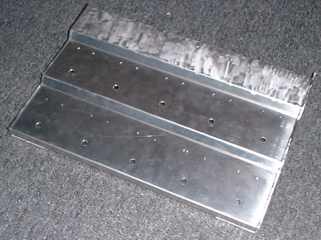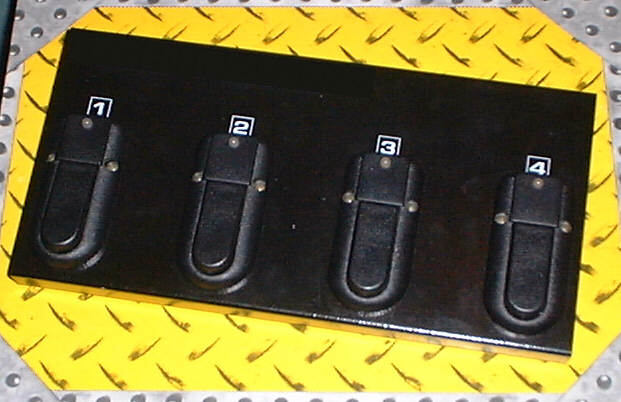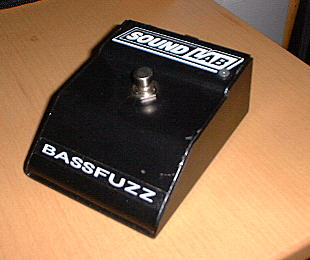FC-50B


Mechanically speaking, this one of the most daunting projects I've done so far. It's an upgraded version of the FC-50 (see below). This controller has 10 foot switches, made from the shells of 5 very small plastic boxes. The aluminium body (left picture) was folded from 3 sheets of aluminium. Each level in the stepped shape of the front consists of a sheet. The sides were hand filed from an extruded L-shaped bar. The finished metal case was then spray painted dark silver and I applied 3 coats of transparent laquer to make it more scratch resistant. The picture on the right shows the final case with the LCD, but with 3 foot buttons missing.
Besides multicolor LEDs in each switch, there's a backlit alphanumerical LCD to inform the user of program number, preset name, and other info. Inside is a Microchip PIC16F874 microcontroller and a tiny 8 kB FRAM chip to store all settings. Much has been done, but the case still has to be finalized and the software is about halfway. Maybe it'll stay in the closet, maybe some day I'll finish it.
FC-50
 This is my current MIDI foot controller. I designated it "FC-50". It's capable of sending program changes 1-48 through MIDI channel 1-4. It has a multi cable connector, so only one cable from the rig to my feet is necessary. I plug my bass into this thing, as well as up to 3 other pedals or whatever it is that needs DC power and a signal. So it actually doubles as a personal stage box.
This is my current MIDI foot controller. I designated it "FC-50". It's capable of sending program changes 1-48 through MIDI channel 1-4. It has a multi cable connector, so only one cable from the rig to my feet is necessary. I plug my bass into this thing, as well as up to 3 other pedals or whatever it is that needs DC power and a signal. So it actually doubles as a personal stage box.
This was my first stand-alone microcontroller project. The unit is run by a Microchip PIC16F84A microcontroller, which controls the bicolour leds, reads out the buttons, and sends MIDI program change commands. It has several functions - press one key: it sends a program change, press two adjacent keys: it changes program banks and the leds change colour, press keys 1 and 4: it changes program range. Other key combinations make it reset itself, set some control functions and change MIDI channels.
Downloadable design files:
- the schematic in Eagle format (sorry, the file was damaged, and lost)
- the schematic in PNG format (picture)
- the source code in PIC assembler
- the firmware in HEX format
BassFuzz
Below is a picture of my "BassFuzz", built from a SoundLab footswitch enclosure. The internet nickname "Fuzzbass" I've taken on was derived from the name of this project. It allows a bass player to use a cranked guitar distortion pedal (i.e. my Boss MT-2) without losing the depth of the bass. The depth (the low-pass filtered original signal) is just mixed back into the output signal. I used it with a Boss MT-2 distortion pedal, and it gave an impressive total sound. Currently it's sitting in the closet gathering dust, as the Boss VF-1 does an excellent job in providing deep sounding bass distortion.
Pedal to the metal (literally): BassFuzz
 Photography
Photography
Fuzzcraft.com comment system 1.1
No signing up, no censoring, no hassle, no strings attached, no nothing.
Please, English or Dutch only. If you don't really want your message to appear in public, consider contacting me privately.